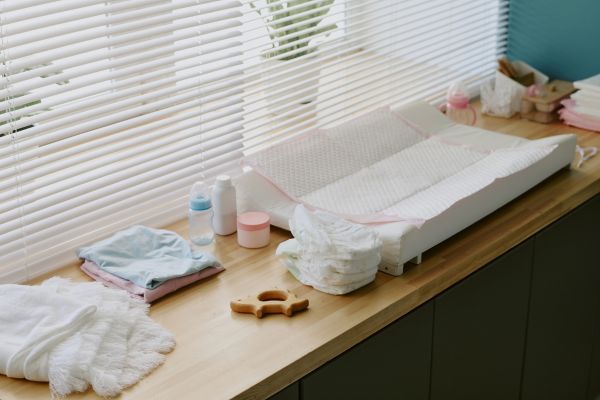Five Safety Tips to Wear a Baby Carrier
Babywearing is on the rise and it’s a good thing. Experts believe that babywearing can reduce crying, ease breastfeeding, foster bonding and allow you to be more productive while still keeping your baby close. Here are some tips to help you keep your baby safe if you decide to babywear in a carrier.
Do Your Research
Try a few models before you buy a carrier. This will help you decide which model is right for you. A great way to start is to go to a local babywearing event so you can see and test many carriers. Kathy Low, a Babywearing International vice president and babywearing educator, said that this is an easy way to do it.
After narrowing down your options, verify that your baby’s weight, age, and height meet the product guidelines. Also, check for safety reviews online and confirm that the U.S. Consumer Product Safety Commission has not recalled the carrier. You can read the instructions manual on the package or on the manufacturer’s website. Also, watch instructional videos. Before you start wearing your baby, you want to be as informed as possible.
Use the carrier in practice
You can use the carrier with your baby inside. Low suggests that you use a doll, an animal or even flour bag to put your baby in the carrier. This will allow you to get used it and feel comfortable with how it feels, without worrying about your baby. You can practice putting the carrier on and taking it off. You can have someone assist you, but also do solo runs.
You must be able put the carrier on, take it off, buckle and unbuckle it (with only one hand as you will need to support your baby simultaneously), and then put your baby in. Then get them out. Although it may take some time to master this skill, you will soon be a pro at it. Once you’re comfortable with the process, you can start to wear the carrier around your house (still without baby).
Danelle Fisher, M.D. FAAP, chair in pediatrics at Providence Saint John’s Health Center Santa Monica, California, advises that you practice your baby in the carrier first.
Verify Their Position on the Carrier
Your baby should be correctly positioned in the carrier. You should ensure your baby’s airway is clear. Dr. Fisher explains that babies should not have their chin pressed against their chests or their face against your body. Both positions can cause obstruction to their breathing and even lead to suffocation.
Your baby should be standing straight up with their face visible. You should also check on them frequently. You should be especially cautious with newborns. Dr. Fisher says that carriers require newborns to have some neck strength and the ability hold their heads up.
A wrap is recommended by a pediatrician for the first few months. Babies typically have strong neck strength around 4 months of age. There are inserts that support the neck and head. However, it is important to ensure your baby meets all the requirements for age and weight before using one. Also, check with the manufacturer to make sure the insert will work with your carrier.
It is important to consider the position of your baby’s legs. Hip dysplasia, or a deformation of the hip joint, can be caused by a baby’s legs hanging straight down. Dr. Fisher says that your baby’s legs should be spread out and that the legs should cross your body. This will allow for healthy hip positioning.
You should also avoid putting your baby in the carrier too long. Dr. Fisher says, “This is not a position the baby should be in over several hours.” Dr. Fisher recommends that you limit the time spent in the carrier to one hour. Give your baby some time to stretch and move, then give them a break.
Dress for the Weather
You can either wear your baby outside or inside your coat during winter. Low recommends that you dress your baby in indoor clothes, including a hat and an indoor coat.
You can still see your cutie’s face if you zip the coat only halfway. You can wear them without your coat. To do this, you will need to dress them in winter gear. Then, put on your coat and carry them. You can adjust the straps to make your baby comfortable. Then, place them in the carrier. Do not cover your baby’s head with a blanket. It can cause breathing problems, no matter how thin.
Take care
When you are carrying your baby, your balance may be compromised. Be careful when you’re turning corners or going through doors. Bend at your knees, support your baby by one or both of your hands when you bend. Low says it’s a good idea inspect the carrier before every use to ensure that there are no frayed seams or that the buckles are functioning properly.
You should also avoid drinking hot beverages or cooking while your baby is with you. Don’t drive your baby in a car or ride in it. Avoid activities that could increase your baby’s chance of falling, such as running or bicycling. These are simple tips that will make babywearing safer and more enjoyable for your child.
Related Articles:
https://www.babyaware.co.uk/safety-guide-for-baby-carriers
https://www.babydr.co.uk/wear-a-baby-carrier
https://www.babyown.co.uk/guide-to-baby-wearing
https://www.babysuccess.co.uk/use-a-baby-carrier
https://www.babyenjoy.us/summer-while-baby-carrier
https://www.babyforlife.us/types-of-baby-carriers
https://www.babyguides.us/choose-a-baby-carrier


